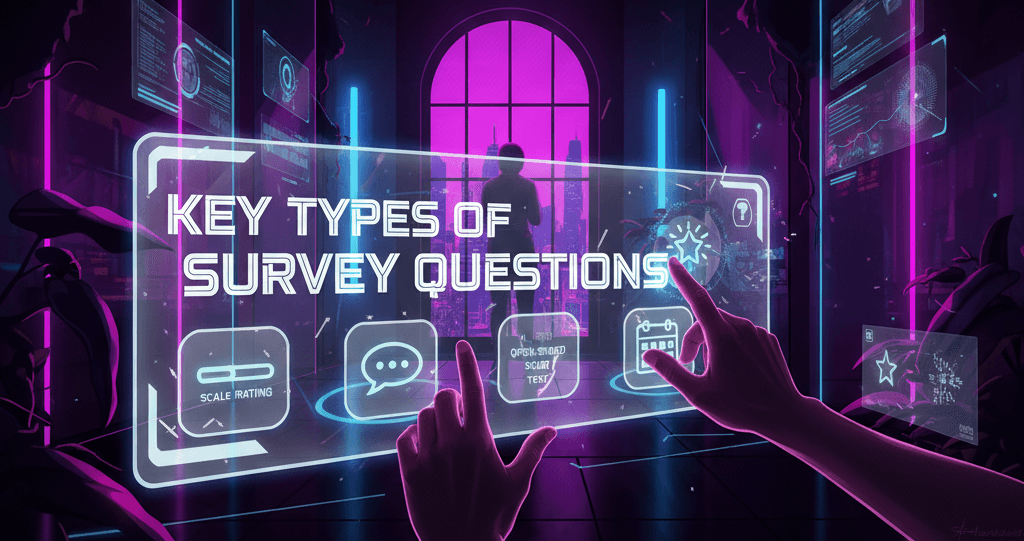As AI-driven solutions continue to revolutionize customer service, businesses are looking beyond basic metrics like response time and ticket resolution rates.
While these traditional metrics offer a snapshot of efficiency, they fall short in capturing the nuanced performance of AI agents and the real impact on customer experience.
Today, advanced analytics is not just a competitive advantage, it’s a necessity for enterprises aiming to deliver seamless, intelligent, and emotionally attuned customer service.
This blog explores how businesses can harness the full potential of advanced analytics to elevate their AI customer service operations.
Key Performance Indicators for AI Agents
AI agents operate differently from human agents, so evaluating them with the same metrics can be misleading. Instead, companies must adopt AI-specific KPIs that reflect how well the system understands, engages, and resolves customer issues.
One of the foundational metrics is the AI Containment Rate, which measures how often AI resolves a customer query without human intervention.
A high containment rate suggests both functional accuracy and customer trust in the AI system. However, containment alone isn’t enough. Confidence Score Accuracy is another crucial KPI, assessing whether the AI’s internal confidence matches actual user outcomes.
For example, if the AI is confident in its response but the user is dissatisfied, there’s a clear misalignment that needs addressing.
Equally important is Escalation Quality. When AI fails to resolve a query and hands it over to a human agent, the quality of that handoff determines whether the transition feels seamless or frustrating.
Proper escalation involves passing context, conversation history, and emotional cues to ensure continuity.
Customer Satisfaction (CSAT) ratings specifically tied to AI-handled interactions can offer insight into customer acceptance and comfort levels.
Lastly, Intent Recognition Rate is vital for evaluating how well the AI understands customer queries, and low scores here can indicate training data issues or gaps in intent mapping.
Setting Up Meaningful Dashboards
Dashboards serve as the command center for AI performance monitoring, but their effectiveness depends on how well they’re tailored to deliver actionable insights.
A meaningful dashboard should provide real-time visibility into performance, not just retrospective summaries. Supervisors should be able to detect performance dips, emerging issues, and shifts in customer behavior as they happen.
A good dashboard allows for custom segmentation of data by product category, customer tier, geography, or issue type.
This segmentation reveals patterns that aggregated data may hide. For instance, an uptick in negative feedback in a specific region may point to a localized issue with product delivery.
Moreover, drill-down capabilities are essential. When metrics dip, such as a sudden drop in CSAT, users should be able to click through and analyze individual conversations to understand the root cause.
Comparing performance between AI and human agents on the same issue types also helps in identifying where AI excels and where human intervention is still crucial.
Visual elements like conversational funnels can show how users navigate through the AI system, where they drop off, and which paths lead to successful resolutions.
Sentiment Analysis and Emotional Intelligence
Sentiment analysis has evolved from basic keyword detection to sophisticated models capable of interpreting the emotional tone of a conversation.
This emotional intelligence is critical in customer service, where tone often carries more weight than words. AI systems equipped with real-time sentiment detection can adapt their responses based on the customer’s emotional state.
For example, detecting frustration may prompt the AI to switch from a standard answer to a more empathetic tone or escalate the issue to a human agent.
Longitudinal sentiment analysis also offers strategic value. By tracking sentiment trends over time, businesses can assess how new policies, product launches, or marketing campaigns affect customer perception.
For instance, a spike in negative sentiment after a new app update could indicate usability issues that need immediate attention.
Furthermore, integrating sentiment data with customer lifetime value (CLV) models can reveal how emotional engagement impacts long-term loyalty.
Customers who feel understood and valued, even by AI, are more likely to remain loyal and recommend the brand to others. As models evolve, AI systems are becoming better at simulating human-like empathy, making emotional intelligence a core part of the customer experience.
Conversation Flow Analysis
Every AI-driven interaction can be visualized as a journey with a beginning, middle, and end.
Conversation flow analysis maps this journey, revealing how users move through different stages of interaction and where they encounter friction. This is essential for optimizing both the AI’s performance and the user experience.
Entry point vs. resolution path analysis helps in understanding if customers are being routed effectively.
If users with simple queries end up in complex workflows, it’s a sign that the AI’s intent recognition or decision trees need fine-tuning. Drop-off points indicate where users abandon the conversation, often due to confusion, repetitive loops, or dissatisfaction.
Looping patterns, where customers are forced to repeat themselves or receive the same answer multiple times, are strong indicators of poor training or ambiguous scripting.
Heat maps and Sankey diagrams can be used to visualize these flows and highlight areas of high traffic or bottlenecks. Goal completion rates, such as how many users were able to track an order or resolve a billing issue, provide concrete metrics on the AI’s effectiveness.
Identifying Improvement Opportunities
Advanced analytics does more than highlight problems, it uncovers opportunities for improvement. By continuously monitoring and analyzing interactions, businesses can proactively refine their AI systems to better meet customer needs.
Low-confidence intents are a prime target for improvement. These are cases where the AI frequently expresses uncertainty or misclassifies user queries.
Updating training data, refining intent hierarchies, and adding clarifying questions can improve performance. Similarly, high escalation rates for seemingly simple issues may point to opportunities to expand the AI’s scope or improve its response logic.
Analytics also help in identifying sentiment hotspots, specific intents or topics that consistently evoke negative emotions. These insights can guide product, policy, or communication changes beyond the customer service realm.
Finally, inefficient response patterns, such as overly verbose or generic replies, can be streamlined to enhance clarity and user satisfaction.
To prioritize actions, businesses can use an impact-effort matrix. This helps in focusing on high-impact, low-effort improvements first while planning long-term enhancements strategically.
ROI Calculation Models
As AI becomes a strategic investment, measuring its return on investment (ROI) is crucial for justifying budgets and guiding future development. Unlike traditional customer service ROI models, AI-focused models must consider both cost savings and revenue generation.
Cost savings can be calculated based on hours saved through automation, reduction in human agent workload, and fewer training resources. For instance, if the AI deflects 10,000 queries per month that would have required human agents, the labor cost savings can be substantial.
Revenue generation, on the other hand, includes upsell opportunities identified by AI, improved retention due to faster resolution, and increased customer satisfaction leading to higher lifetime value.
AI systems that handle queries accurately and empathetically can convert support interactions into sales opportunities.
Operational efficiencies, such as faster onboarding of new agents (due to clear AI escalation), consistent customer experiences, and fewer compliance issues, also contribute to ROI. A comprehensive model might look like this:
ROI = (Total Cost Savings + Incremental Revenue Generated) / Total AI Investment
This formula should be supported with detailed assumptions and regularly updated as AI capabilities and customer expectations evolve.
Turning Insights into Action
Analytics are only valuable if they lead to meaningful action. A well-structured feedback loop ensures that insights gleaned from data are fed back into system design, training, and strategy.
The loop begins with data collection, encompassing everything from chat logs and sentiment scores to funnel drop-off rates and CSAT results.
Once data is collected, cross-functional teams must analyze it for actionable trends. For example, if sentiment analysis reveals rising frustration around a particular product feature, product teams should be informed immediately.
If flow analysis shows high abandonment at a specific step, UX designers may need to revise that workflow.
The next step is action: updating training data, redesigning conversational flows, or revising escalation protocols. These actions must then be monitored to assess impact, closing the loop.
Continuous refinement keeps the AI system agile and aligned with customer expectations.
Real-world examples demonstrate this process in action. A telecom provider used flow analysis to identify and simplify complex billing queries, reducing resolution time by 30%. A retail company tied AI confidence scores to post-interaction surveys, refining training datasets and boosting CSAT by 12%.
Data Governance and Privacy in AI Analytics
With great data comes great responsibility. Collecting, storing, and analyzing customer interaction data raises critical privacy and compliance questions. AI customer service systems must adhere to regulations such as GDPR, CCPA, and other data protection frameworks.
Organizations must implement strong data governance frameworks that define who can access what data, under what conditions, and for how long.
Role-based access controls, audit logs, and anonymization techniques help mitigate risk. Equally important is transparency, informing customers about how their data is used, and ensuring there are opt-out mechanisms in place.
Privacy-first analytics platforms are emerging that enable robust insights without compromising individual identities.
Differential privacy, federated learning, and synthetic data are some techniques that enable ethical data use. By integrating these practices, businesses not only avoid legal issues but also build customer trust.
Benchmarking AI Performance Against Industry Standards
Internal analytics are powerful, but understanding how your AI systems stack up against industry benchmarks adds strategic value. Benchmarking helps set realistic performance targets, uncover areas of underperformance, and inspire innovation by learning from leaders.
Benchmark categories might include AI containment rates, average response times, CSAT scores, escalation percentages, and sentiment accuracy.
Participation in industry studies, consortia, or sharing anonymized data with benchmarking platforms enables organizations to gain perspective.
For example, if your AI’s containment rate is 68% but the industry average is 75%, there’s a clear signal for enhancement. Conversely, exceeding industry averages can be used as a marketing advantage and internal morale booster.
Predictive and Prescriptive Analytics for AI Evolution
The future of AI analytics lies in predictive and prescriptive capabilities. Predictive analytics uses historical data to forecast future outcomes, such as identifying the likelihood of a conversation needing human escalation.
Prescriptive analytics goes a step further by recommending the best course of action, like adjusting conversation paths in real-time.
These advanced analytics help organizations move from reactive problem-solving to proactive optimization.
AI models can be trained to spot early warning signals of customer dissatisfaction, recommend responses based on context, or even alter workflows dynamically.
By combining real-time monitoring with forward-looking insights, businesses can maintain AI performance at its peak and delight customers at every touchpoint.
Conclusion: Building a Data-Driven AI Service Future
In the age of AI-driven customer service, data is more than a performance tracker, it’s a compass.
While traditional metrics offer surface-level insights, advanced analytics empower businesses to understand the deeper dynamics of customer interactions, optimize continuously, and deliver emotionally intelligent experiences at scale.
Businesses can transform their AI systems from support tools into strategic assets by focusing on specialized KPIs, designing insightful dashboards, leveraging sentiment and flow analysis, upholding data ethics, and incorporating predictive insights.
The future of customer service belongs to organizations that not only invest in AI but also master the analytics that make it truly intelligent.












